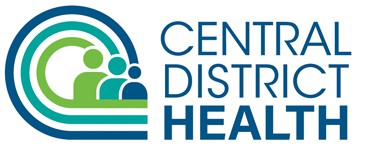Wildfires produce high volumes of smoke each year, leading to unhealthy air quality levels, sometimes hundreds of miles away from the fire. Wildfire smoke is a mix of gases and fine particles from burning trees, plants, buildings, and other material. Patients who are very near the fire source can have smoke inhalation injury, which is caused by thermal (superheated gases), chemical (e.g., particulate matter and other irritants), and toxic (e.g., carbon monoxide, cyanide) effects of the products of combustion.
The acute signs and symptoms of smoke exposure can include headache, eye and mucous membrane irritation, dyspnea, cough, wheezing, chest pain, palpitations, and fatigue. Wildfire smoke exposure may exacerbate chronic conditions like asthma, chronic obstructive pulmonary disease (COPD), and congestive heart failure. Children, older adults, or those who are pregnant are also especially at risk for severe outcomes.
Medical management consists of carefully assessing signs and symptoms, providing supportive and symptomatic care for smoke exposure, and treating possible existing respiratory and cardiovascular illness. Increased emergency department visits for respiratory and cardiovascular conditions can occur during the days immediately following wildfire smoke exposure, with increases in associated morbidity and mortality.
AirNow is an air quality data website maintained by multiple federal agencies, which reports air quality using the official U.S. Air Quality Index (AQI), a color-coded index designed to communicate whether air quality is healthy or unhealthy for your patients. Current Idaho-specific wildfire areas can be found at the BLM Idaho Wildlife Information website, the Idaho Fish and Game real time fire map, or the National Interagency Fire Center map.
Recommendations for Clinicians
- For patients who are very near the fire source who may have burns and/or smoke inhalation injury, follow Advanced Trauma Life Support (ATLS) guidelines and consult your regional burn center. Consider smoke exposure in patients who live in wildfire smoke-affected areas identified on AirNow presenting with any of the signs and symptoms noted above, paying particular attention to those at higher risk of developing complications. Treatment is supportive and based on clinical presentation.
- Monitor healthcare capacity closely and plan for a possible increase in patient visits due to asthma, COPD, and metabolic and cardiovascular disease exacerbations.
- Proactively counsel patients on strategies to avoid or reduce smoke exposure, especially among individuals with asthma, COPD, or cardiovascular disease, children, older adults, and those who are pregnant. These strategies include, during times of poor air quality:
- Stay indoors, including closing windows and doors, and using HVAC systems effectively to minimize exposure to wildfire smoke.
- Prevent further indoor air pollution by not smoking or using candles, gas, or aerosol sprays; do not fry or broil meat; do not vacuum.
- Stay aware of current and predicted local air quality using AirNow or other tools.
- Use a portable air cleaner or create a cleaner air room in the home.
- Go to a designated cleaner air shelter (such as a school gymnasium, buildings at public fairgrounds, or a civic auditorium) during times of poor air quality.
- Select and use an N95 respirator when it is not possible to avoid exposure to wildfire smoke.
- Advise patients at higher risk for severe outcomes to monitor their symptoms
more closely and ensure that their medication prescriptions are up-to-date and
available.
For More Information
- CDC Wildfires
- CDC Community Respirators and Masks
- Wildfire Smoke and Your Patients’ Health (web-based training for clinicians)
- Cascio WE. Wildland fire smoke and human health. Sci Total Environ. 2018 May
15;624:586-595. doi: 10.1016/j.scitotenv.2017.12.086. Epub 2017 Dec 27. PMID:
29272827; PMCID: PMC6697173.
#####

